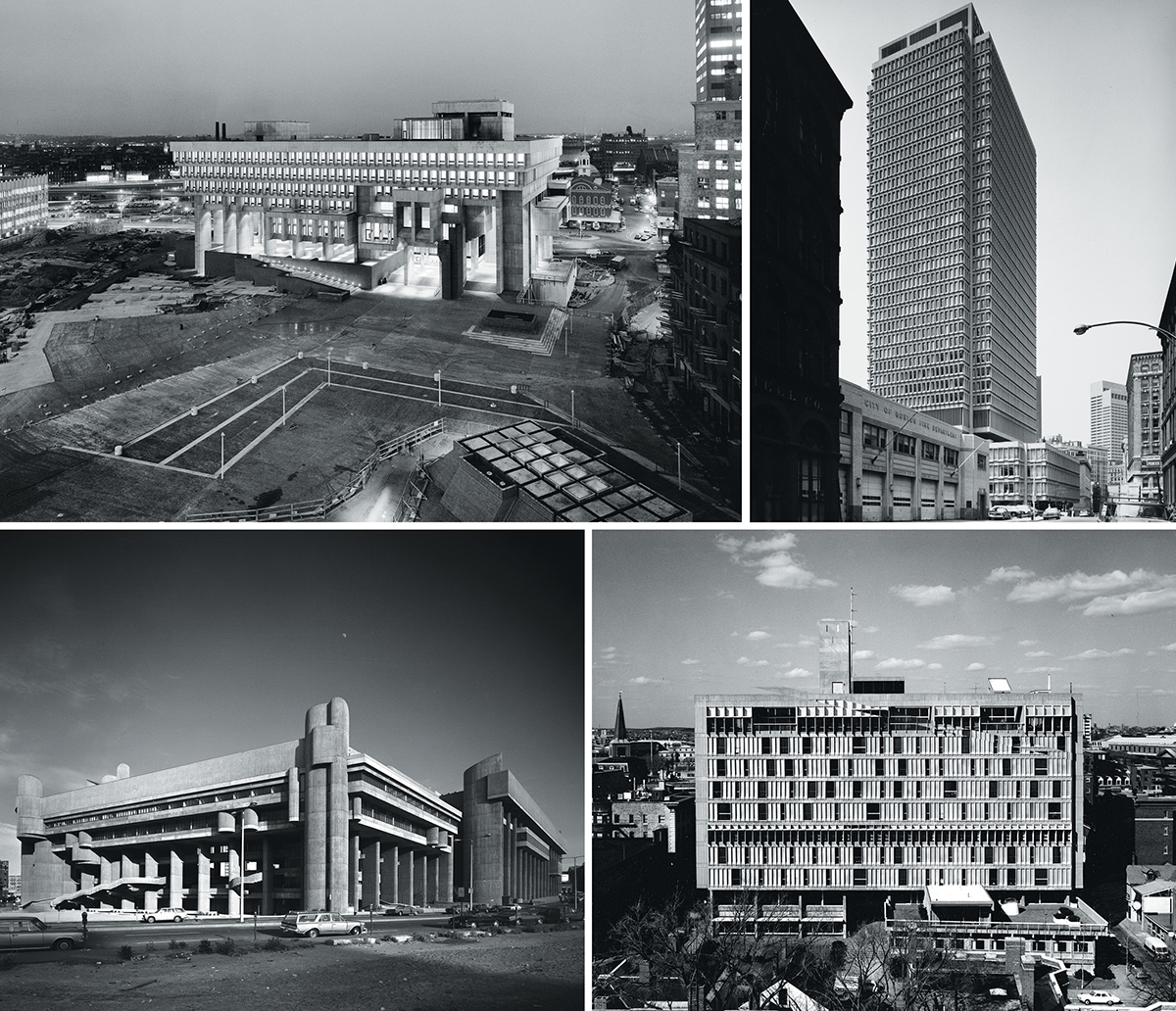New Book ‘Heroic’ Reexamines Boston’s Concrete Architecture

You can’t fight City Hall—love it or hate it, the Brutalist edifice, like many others in Boston, is probably here to stay. But in a new book out this month, Heroic: Concrete Architecture and the New Boston, three local architecture academics argue that we all need to stop bitching and embrace our city’s imposing slab-poured masterpieces.
The book is the fruit of an almost-decade-long effort by Mark Pasnik, Michael Kubo, and Chris Grimley to rehabilitate public opinion of the Brutalist style, which they are trying to rebrand “Heroic.” And Boston, they say, is uniquely rich in examples. The city, they argue, became a laboratory for a “generation of architects working in a shared vocabulary of concrete modernism,” from City Hall to the New England Aquarium to the Christian Science Center.
Why was this the style of choice? In the ’60s and ’70s, the so-called Brutalist style was meant to save failing cities like Boston. To entice dollars and power players back into the city, planners thought the Hub needed a big, radical—nay, brutal—strategy (such as bulldozing 46 acres of 19th-century buildings in the West End). “Only massive, comprehensive solutions can be the answer to today’s problems and numbers,” declared Eduardo Catalano, the Argentine-born MIT professor responsible for the university’s Stratton Student Center. Blocky, monumental, and utilitarian, the new building projects that sprang up reflected the outsize civic ambitions that created them.
Heroic’s essays beautifully illustrate the context in which the style flourished in Boston. Which is what academic architects do best: labor to explain why we should embrace things we instinctively recoil from.
Heroic: Concrete Architecture and the New Boston, the Monacelli Press, $50.

